Bollards
Bollards
Bollards have long served as essential fixtures in urban landscapes, offering both security and structure to public and private spaces. Originally used in maritime settings, bollards first appeared as sturdy posts along docks to secure ships. Over time, their functionality expanded, evolving into protective barriers for storefronts, pedestrian walkways, and high-traffic areas. Today, they are vital in preventing unauthorized vehicle access, improving traffic control, and enhancing safety in cities worldwide. Their history dates back centuries, with early bollards often repurposed from old cannon barrels, symbolizing strength and resilience—qualities that continue to define their role in modern infrastructure.
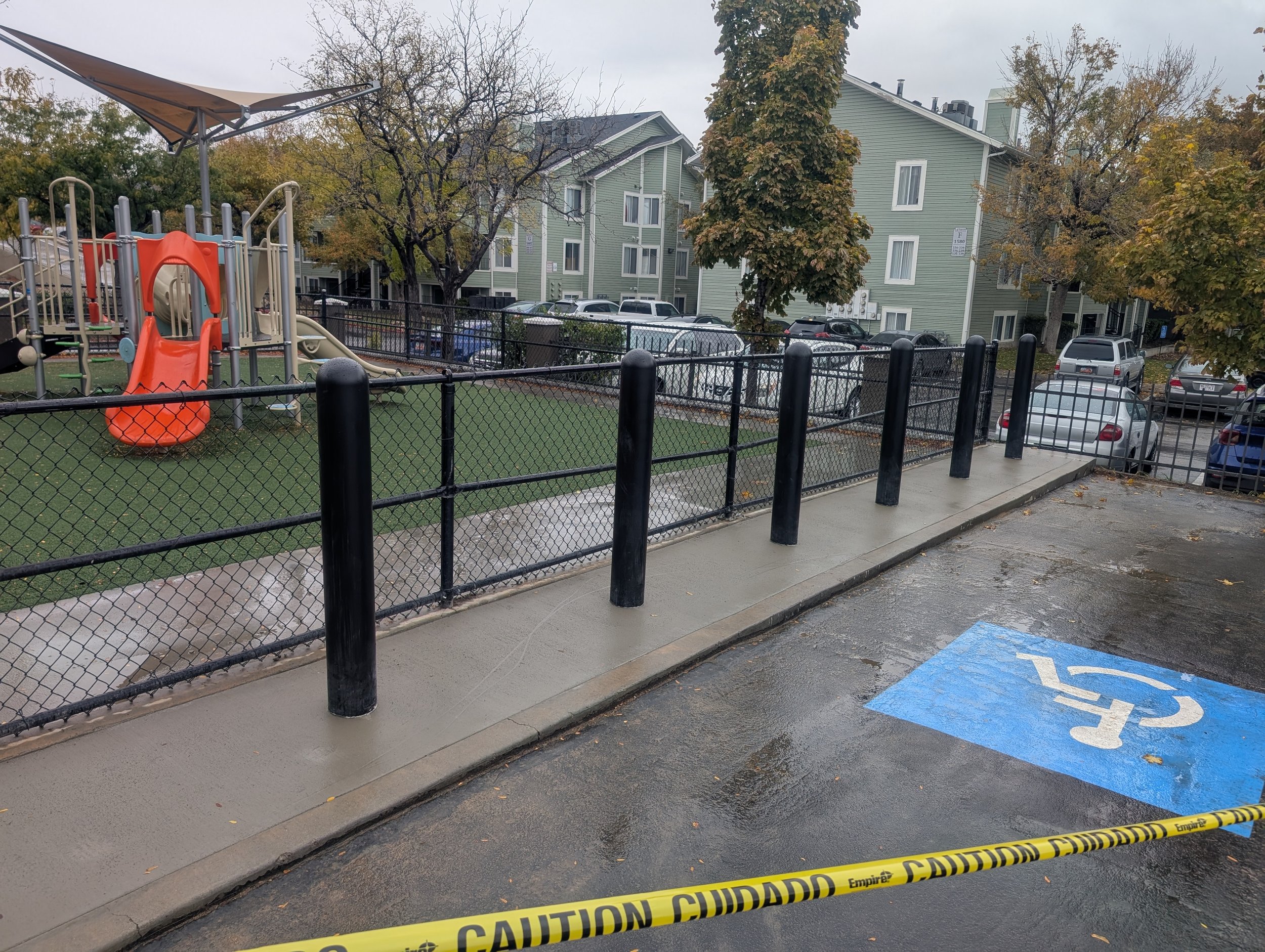
SAFETY BOLLARDS
Safety Bollards: These bollards prioritize pedestrian and vehicle safety, preventing accidents and maintaining order in busy environments. Often found near schools, crosswalks, and storefronts, safety bollards help shield vulnerable areas from unintended vehicle intrusion. Made from durable materials like concrete or steel, they provide peace of mind by clearly marking boundaries while ensuring accessibility.
Beyond their protective function, safety bollards serve as vital elements in urban planning, helping guide traffic flow and ensuring pedestrian zones remain secure. Their presence prevents vehicles from encroaching on sidewalks, bike lanes, and other high-traffic areas, reducing the risk of accidents. Many safety bollards are designed with bright colors or reflective coatings to enhance visibility, making them effective even in low-light conditions.
Some safety bollards incorporate additional features such as energy-absorbing materials to minimize impact force, or flexible designs that withstand light collisions without permanent damage. In areas where temporary access is needed, removable or retractable options provide versatility while maintaining pedestrian safety. By balancing strength, visibility, and accessibility, safety bollards contribute to a safer, more organized environment for both pedestrians and drivers alike.
- Structural Integrity Verification
- Energy Efficiency & Sustainability Compliance
- Precision in Finishing Touches
SIGNAGE BOLLARDS
Signage bollards serve a dual purpose—they act as protective barriers while displaying important signs for traffic control, safety, or branding. These bollards are commonly used in parking lots, storefronts, and pedestrian zones to enhance visibility and communication. Signage bollards are an effective way to enhance safety and communication in public spaces.
Beyond their functional role, signage bollards contribute to a more organized and visually cohesive environment. They provide clear directional guidance, helping pedestrians and drivers navigate safely. Whether marking pedestrian crossings, indicating restricted areas, or showcasing business logos, these bollards are designed to be highly visible while maintaining durability against environmental and impact-related wear.
Modern signage bollards also integrate innovative features such as reflective surfaces, solar-powered lighting, or customizable digital displays. These advancements improve visibility in low-light conditions and allow businesses and municipalities to update messaging as needed. By combining safety, branding, and accessibility, signage bollards enhance both security and communication in bustling urban spaces.
- Signs for directions, warnings, or branding.
- Made from steel, aluminum, or durable plastic
- Commercial areas, public spaces, restricted zones
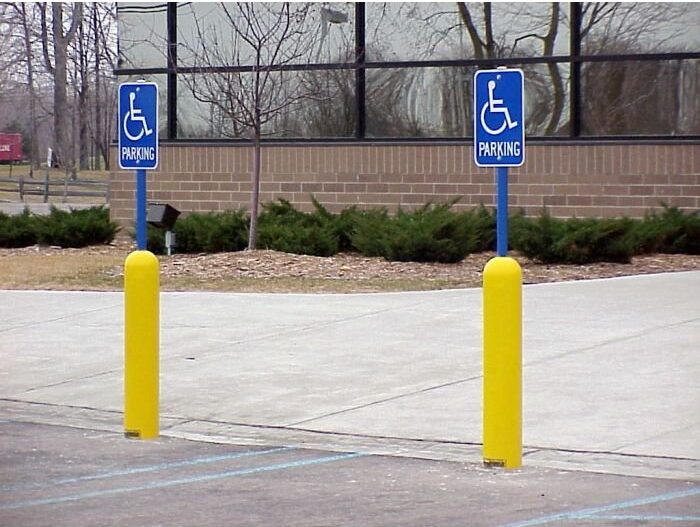
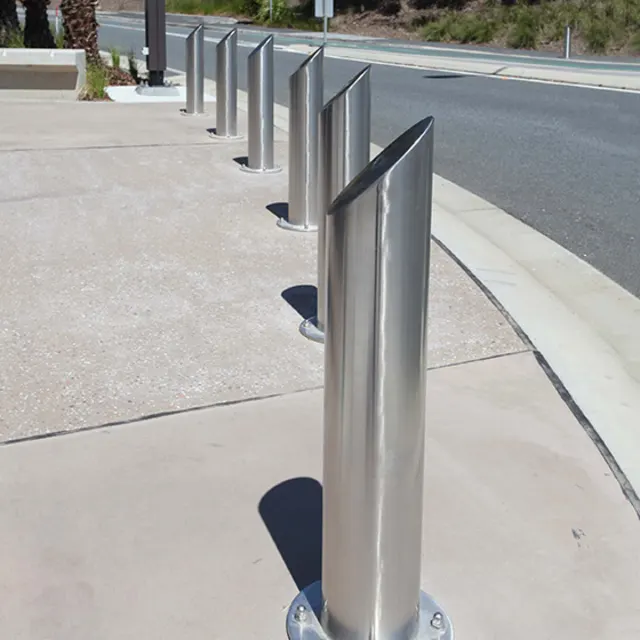
SECURITY BOLLARDS
Security Bollards: Built for maximum protection, security bollards serve as robust barriers against unauthorized or forced vehicle entry. Used in high-risk locations such as government buildings, embassies, and military installations, these bollards are often reinforced with impact-resistant cores and advanced locking mechanisms. Some security bollards are retractable or removable, allowing for controlled access while maintaining strong perimeter defense.
Security bollards are also widely utilized in commercial spaces, pedestrian areas, and storefronts to safeguard against accidental collisions or intentional vehicle attacks. Their strategic placement helps protect people and property while preserving accessibility for foot traffic. Designed to withstand extreme force, these bollards are constructed from heavy-duty steel or concrete, often reinforced with deep foundations to maximize stability and resistance.
Many modern security bollards incorporate smart technology, such as automatic retractability, remote access control, or integrated alarms. These features allow businesses and government facilities to adapt their security measures based on real-time needs while maintaining a seamless blend of protection and functionality. Whether used for traffic control, securing sensitive locations, or preventing unauthorized access, security bollards are a crucial component of today’s urban defense systems.
- Some security bollards are impact-tested to withstand vehicle collisions.
- Made from steel, concrete, or reinforced polymers for maximum durability.
- Available in permanent, removable, or automatic configurations.
- Can include reflective strips, branding, or aesthetic enhancements.
Decorative Bollards
Decorative Bollards: Designed to enhance the visual appeal of urban spaces, decorative bollards combine style with functionality. They often feature intricate designs, custom finishes, and architectural elements that complement surrounding landscapes. While primarily aesthetic, they can also serve as subtle barriers, guiding pedestrian traffic and creating well-defined spaces in plazas, parks, and commercial areas.
Beyond their aesthetic appeal, decorative bollards play a crucial role in defining public spaces while maintaining an inviting atmosphere. They help shape walkways, delineate outdoor seating areas, and create harmonious urban environments without feeling obstructive. Their designs often incorporate materials such as cast iron, stainless steel, or concrete, allowing them to seamlessly integrate with both historic and contemporary architecture.
Many decorative bollards also serve functional purposes beyond traffic guidance. Some are designed with lighting elements to enhance visibility at night, while others include retractable or removable features for adaptable space management. Cities and businesses often customize these bollards to reflect local branding or artistic themes, making them not only a safety feature but also an integral part of a location’s identity.
- Available in classical, modern, and custom styles to complement architecture.
- Made from ductile iron, steel, aluminum, or concrete for durability.
- Can include powder coatings, engravings, or branding elements.
- Helps define pedestrian areas while preventing unauthorized vehicle access.
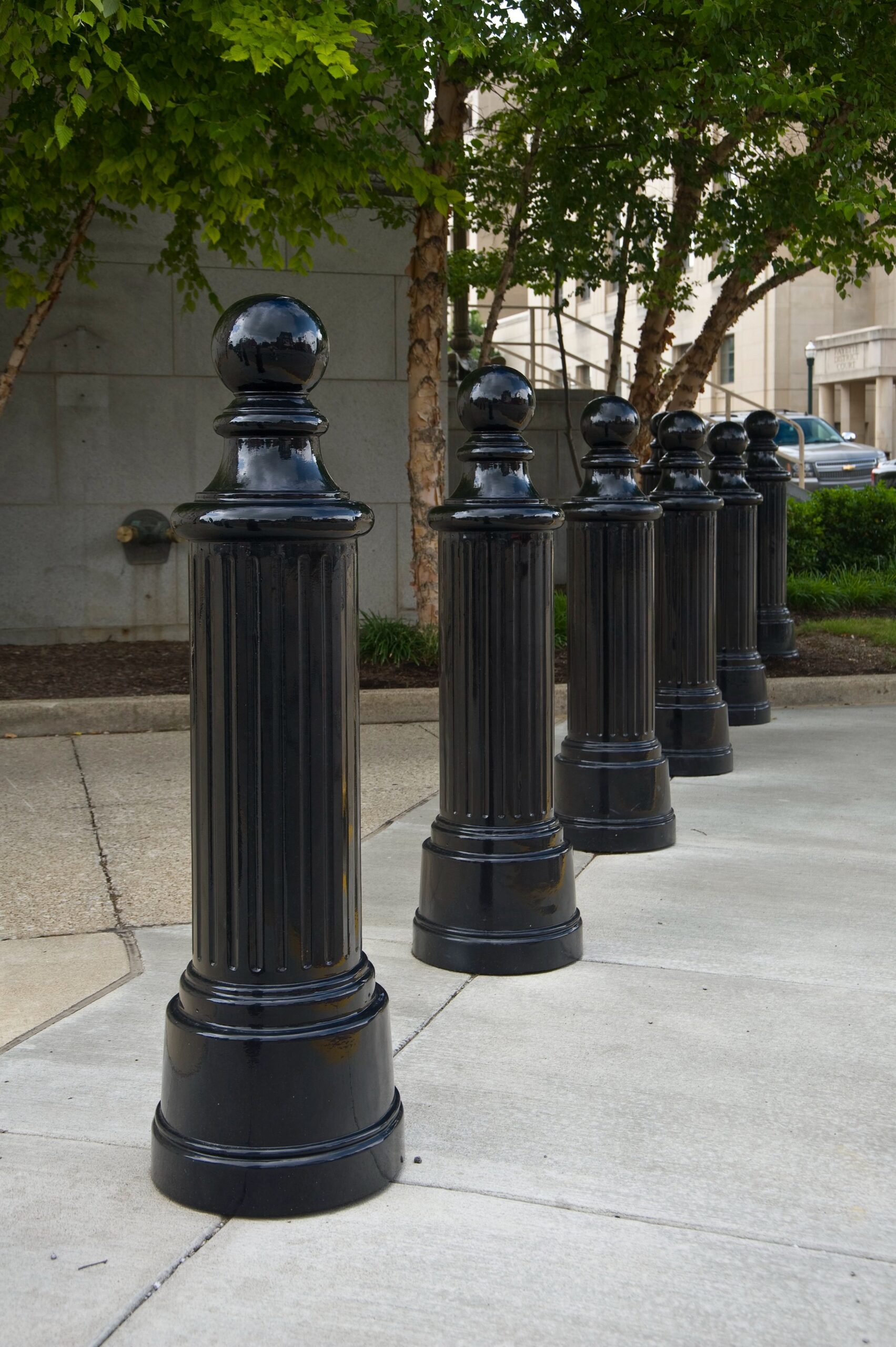
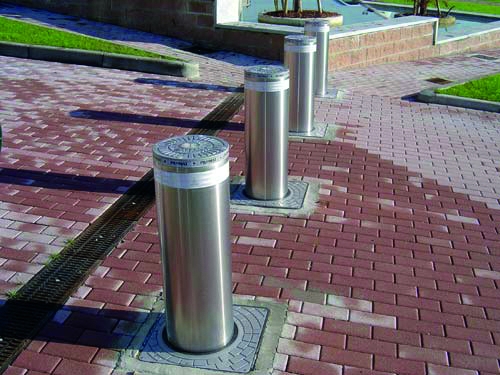
SECURITY BOLLARDS
Pneumatic bollards are automated security barriers that use compressed air to raise and lower, controlling vehicle access in high-security areas. They are commonly used in government buildings, military bases, industrial sites, and restricted urban zones.
Key Features of Pneumatic Bollards
- Fast Operation – Typically raises and lowers in 8-15 seconds.
- Durable Construction – Made from 316 stainless steel for environmental resistance.
- Automated Control – Can be operated via card readers, biometric scanners, remote controls, or key switches.
- Safety Features – Includes photocells, inductive loop detectors, flashing lights, and traffic signals.
- Low Maintenance – Pneumatic systems require less upkeep compared to hydraulic alternatives.
How They Work
Pneumatic bollards function using compressed air, which pushes the bollard up or down based on signals from an access control system. They can be integrated with security posts, proximity sensors, and emergency override systems for enhanced security.
Security bollards are also widely utilized in commercial spaces, pedestrian areas, and storefronts to safeguard against accidental collisions or intentional vehicle attacks. Their strategic placement helps protect people and property while preserving accessibility for foot traffic. Designed to withstand extreme force, these bollards are constructed from heavy-duty steel or concrete, often reinforced with deep foundations to maximize stability and resistance.
Many modern security bollards incorporate smart technology, such as automatic retractability, remote access control, or integrated alarms. These features allow businesses and government facilities to adapt their security measures based on real-time needs while maintaining a seamless blend of protection and functionality. Whether used for traffic control, securing sensitive locations, or preventing unauthorized access, security bollards are a crucial component of today’s urban defense systems.
- - Pneumatic bollards use compressed air to raise and lower, allowing seamless vehicle control in high-security areas.
- Can be controlled via card readers, biometric scanners, remote controls, and emergency override systems for enhanced security solutions.
- Equipped with photocells, loop detectors, flashing lights, and traffic signals, ensuring safe and efficient operation.
- Made from 316 stainless steel, they offer resistance to environmental conditions and require less upkeep compared to hydraulic models.


